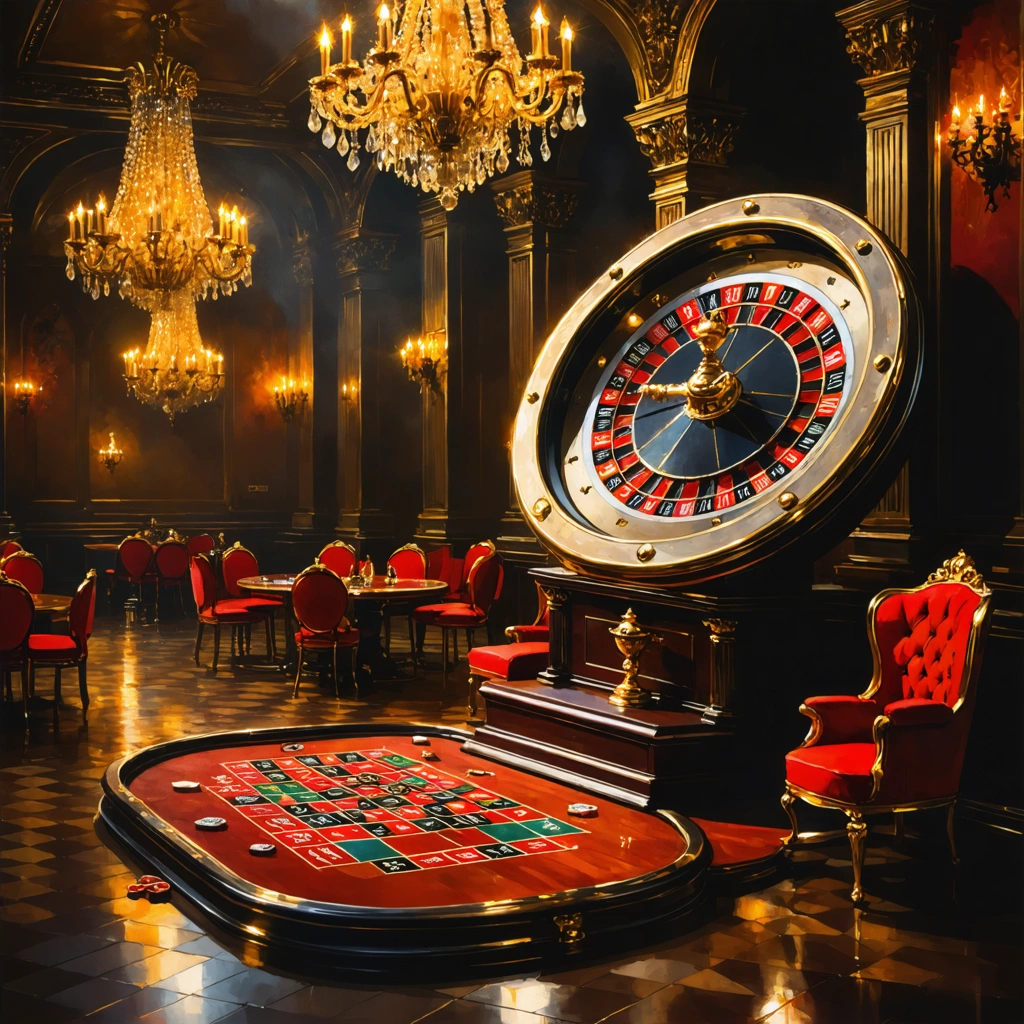Unlocking the Mystery Behind the Red Door Roulette Wheel
Imagine stepping into a dimly lit casino room, the air thick with anticipation and the faint clink of chips echoing all around. At the center of the action spins a wheel that holds countless fortunes—the red door roulette wheel. What makes this particular wheel so intriguing to seasoned players and curious newcomers alike? Beyond its vibrant design and hypnotic spin lies a world of intricate mechanics and subtle statistical nuances that can tip the odds, just slightly, in your favor.
For many, roulette is a game of pure chance, a gamble sealed by the unpredictable bounce of a ball. Yet, those who have delved deeper into the red door roulette mechanics know there's more than meets the eye. The wheel itself, its construction, the speed at which it spins, and even the croupier’s touch, all play a part in shaping the outcome. Could understanding these factors truly shift the roulette statistical edge and transform your approach? This question has kept enthusiasts poring over every detail, searching for the elusive edge in a game often dismissed as luck alone.
Why Most Players Miss the Mark—and What They’re Overlooking
It’s easy to get caught up in the excitement of live roulette tactics—placing bets, watching the ball dance around the wheel, and hoping for that lucky number. However, many players overlook the subtle, yet critical, elements encoded in the red door roulette wheel’s design. A smooth, perfectly balanced wheel spins differently than one with slight imperfections or intentional biases. Even the materials used, the depth of pockets, and the wheel’s tilt can affect the ball’s trajectory, turning what seems like chaos into a pattern waiting to be decoded.
Unfortunately, this complexity often intimidates players, pushing them towards simplistic strategies or, worse, pure guesswork. The frustration of repeated losses can lead to abandoning the game or chasing irrational “systems” that promise big wins but deliver little. What if, instead, you could gain a clearer insight into the mechanics at play? What if the red door roulette wheel’s secrets could be demystified, offering a genuine statistical edge that’s grounded in reality rather than fantasy?
The Reality of the Roulette Statistical Edge
Contrary to popular belief, the house doesn't always hold an insurmountable advantage. The so-called “house edge” is a carefully calculated figure, but it assumes a perfectly fair and balanced wheel. In practice, no wheel is flawless, and the red door roulette wheel is no exception. Skilled players and observers have noted subtle biases—repeated outcomes that deviate from pure randomness. These biases, when identified and understood, can be exploited through tailored live roulette tactics, turning the game from a blind bet into a calculated risk.
Yet, identifying such biases requires more than luck; it demands a deep dive into wheel dynamics, observation, and statistical analysis. This is where many stumble, unsure where to begin or how to interpret the data. The good news? This guide will walk you through the essential aspects of red door roulette mechanics and how to leverage them to your advantage.
What This Guide Will Cover
In the sections that follow, we’ll peel back the layers of the red door roulette wheel:
- Wheel Mechanics Unpacked: Learn the design features, from wheel balance to pocket construction, that subtly influence ball behavior.
- Statistical Edge Explained: Understand how statistical biases emerge and how they can be tracked and quantified.
- Effective Live Roulette Tactics: Discover practical strategies that incorporate mechanical insights and statistical data to enhance your betting decisions.
Whether you're a casual player intrigued by the science behind the spin or a serious gambler craving an edge, this breakdown offers actionable knowledge. By blending mechanical understanding with statistical analysis, you’ll soon see the red door roulette wheel in a whole new light—not just as a game of chance, but as a puzzle with patterns waiting to be solved.
So buckle up—let’s dive into the fascinating world where physics meets probability, and where a keen eye can make all the difference between a lucky guess and a strategic win.

Red Door Roulette Wheel: Mechanics and Statistical Edge Explained
What is the Red Door Roulette Wheel and How Does it Differ from Standard Roulette Wheels?
The red door roulette wheel is a specialized variant of the roulette wheel, often distinguished by its unique design elements and subtle mechanical variations. Unlike traditional roulette wheels, which typically have either 37 (European) or 38 (American) numbered pockets, the red door roulette wheel may incorporate distinctive markings or features influencing spin behavior and ball trajectory.
These mechanical nuances are part of what players and enthusiasts refer to as red door roulette mechanics. They can include differences in pocket size, wheel speed, ball launch angle, and even the presence of physical markers on the wheel's "red door" segment that can affect ball settling patterns. Understanding these mechanics is essential for players aiming to optimize their strategies.
How Do Red Door Roulette Mechanics Affect Game Outcomes?
The mechanics of the red door roulette wheel directly impact the randomness and frequency of winning numbers. Unlike purely random digital simulations, physical wheels have slight imperfections and mechanical biases.
In the context of the red door roulette wheel:
- Wheel Bias: Mechanical wear or design can cause certain numbers or pockets to be favored, creating a non-uniform distribution of outcomes.
- Ball Trajectory: The ball’s interaction with the wheel’s frets and the red door segment can alter its path, influencing where it lands.
- Spin Speed Consistency: Dealers’ spin technique and wheel speed affect ball deceleration and eventual resting place.
Players who study these mechanics closely can identify patterns or biases, giving them an edge beyond pure chance.
What is the Roulette Statistical Edge and How Can It Be Leveraged?
The term roulette statistical edge refers to any advantage a player might gain by understanding and exploiting the underlying probabilities and mechanical biases of the game.
Roulette is generally a game with a built-in house edge:
- European roulette has a house edge of approximately 2.7%
- American roulette, with its extra double zero, has a house edge around 5.26%
However, by analyzing the red door roulette mechanics, players can sometimes detect slight deviations from perfect randomness, effectively reducing the house edge or even turning it into a player advantage.
For example, professional gamblers have historically used wheel bias detection techniques to identify wheels where some numbers hit disproportionately often. This requires hours of observation and recording spin outcomes to build statistically significant data.
What Are Effective Live Roulette Tactics When Playing on a Red Door Roulette Wheel?
Utilizing live roulette tactics specifically tailored to the red door roulette wheel involves combining observational skills, understanding mechanical influences, and applying mathematical strategy. Here are some proven tactics:
- Wheel Tracking: Monitor the numbers that appear over multiple spins to detect bias or favored sections, especially around the red door segment.
- Dealer Signature Analysis: Observe the dealer’s spin style. Consistent spin speed and ball launch can create repeatable ball trajectories.
- Betting Patterns: Once a bias or pattern is detected, adjust your bets to cover those high-probability pockets more frequently.
- Bankroll Management: Use flat betting or progressive betting cautiously to maximize gains while mitigating losses.
These tactics require patience, discipline, and a deep understanding of both the physical wheel and statistical principles.
Are There Case Studies or Examples Demonstrating Success Using Red Door Roulette Mechanics?
Indeed, there are documented instances where expert players have leveraged physical wheel characteristics to gain an advantage:
- Joseph Jagger (1873): Known as the "man who broke the bank at Monte Carlo," Jagger identified biased roulette wheels by recording spin results, enabling him to profit significantly.
- Visual Wheel Trackers: Modern advantage players use computer-assisted devices to track ball and wheel speeds in live settings, exploiting mechanical biases similar to those found in red door roulette wheels.
While casinos have since improved wheel manufacturing and maintenance to reduce such biases, the underlying principles of red door roulette mechanics and roulette statistical edge continue to be relevant for sophisticated players.
Why Is Understanding Red Door Roulette Mechanics Important for Serious Players?
Understanding the intricate workings of the red door roulette wheel allows players to:
- Recognize physical biases or dealer tendencies
- Develop informed betting strategies rather than relying solely on chance
- Enhance their overall awareness and decision-making during live roulette sessions
This knowledge transforms roulette from a purely luck-based game into a game where skill, observation, and statistical analysis can substantially influence outcomes.
Summary
The red door roulette wheel offers a fascinating blend of physical mechanics and probability that can be studied to gain a roulette statistical edge. By understanding the wheel’s unique features through red door roulette mechanics and applying effective live roulette tactics, players can elevate their gameplay from random guessing to calculated strategy. While the house retains an advantage, informed players can identify and exploit subtle biases, increasing their chances of success.




